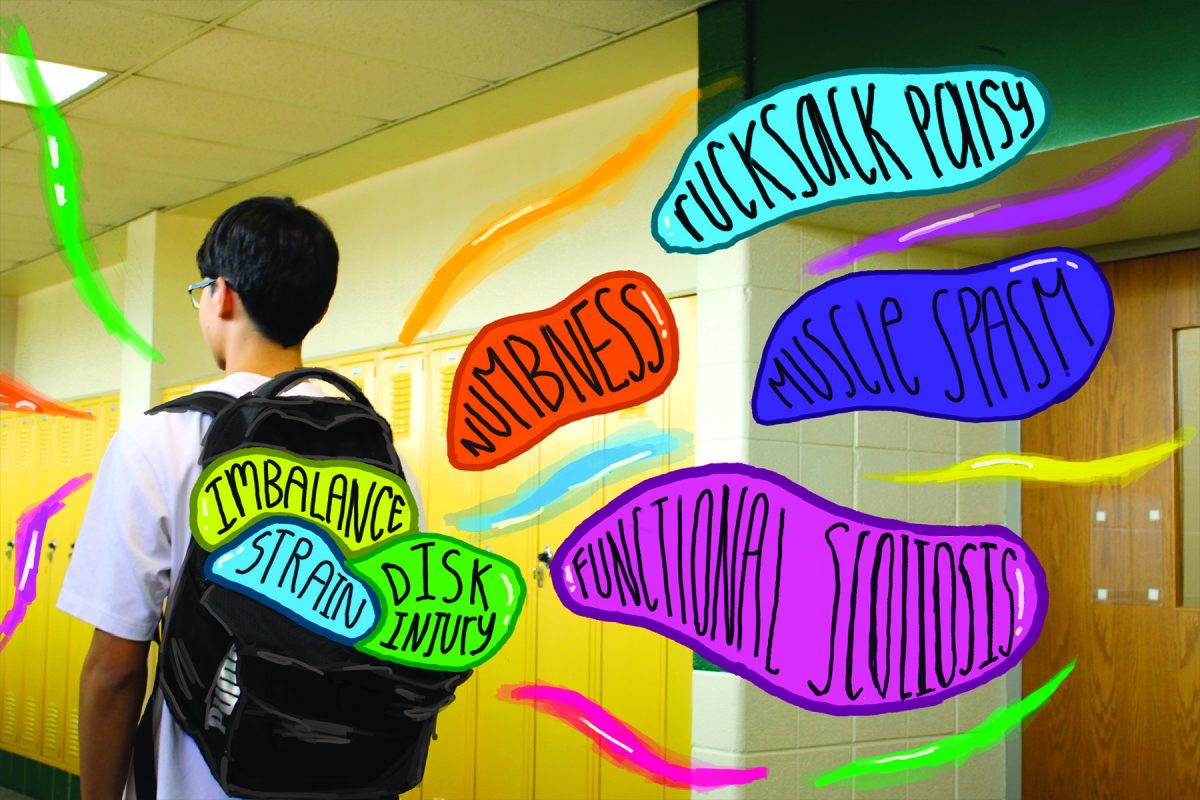With her backpack strapped to her back and her tennis bag fastened at the front, junior Adelynn Chon hauls a weight that leaves her with lingering pain.
“There’s three rackets in there [and] a big gallon water bottle jug,” said Chon. “I put that in my tennis bag if there was a practice or a match, and that just added onto my weight … It makes me really unbalanced.”
According to Dr. Michael Lee, professor of orthopedic surgery and rehabilitation medicine at the University of Chicago, heavy backpacks can cause muscle strains and discomfort in the short term.
“In general, it is recommended that backpack weight [should] not exceed 10-15 percent of one’s body weight,” Lee said.
According to Chon, her back hurts more when she wears her bag on one side.
“I’ve tried using a different backpack, like [tote bags],” said Chon. “But then that just makes your shoulders and your spine uneven. I’d rather just keep the weight equal on both shoulders.”
According to Dr. Rob Orr, professor of physiotherapy at Bond University in Australia, students who carry backpacks on one side of their body put themselves at risk of developing functional scoliosis.
Functional scoliosis is a temporary curve in the spine created by an external pressure.
“If you think about it, what they are doing is they’re carrying a unilateral load, a load on one side for long periods, and it’s going to change the curvature of the spine,” Orr said.
Weight transferred through the backpack strap may also cause rucksack palsy, or “backpacker’s palsy,” which can damage the nervous system, causing numbness and aching in the arm and hand, affecting fine motor skills like writing, Orr said.
According to doctor of chiropractic Willes Ko, he has seen and treated multiple patients for pain associated with heavy backpacks.
Ko had a patient who dealt with back pain for a year before learning that she was developing functional scoliosis due to her backpack weight, he said.
“Luckily, through exercise and treatment, we were able to get rid of the spasm,” said Ko. “We strengthened her back, she lightened her load and then she had a follow-up MRI six months later, and the deviation to the left went away.”
Ko’s biggest concern for students is the long-term effect of heavy backpacks, he said.
“I have patients that are much older that continue to have a poor posture over many years and did nothing about it,” said Ko. “When you get older, you’re more vulnerable to disc injuries in your spine and degenerative arthritis.”
Students tend to neglect pain when it arises, Ko said.
“They’re just resilient,” said Ko. “[They think,] ‘I just do what I got to do,’ and at the same time, you’re doing your body a disservice.”
According to Chon, the heavy weight of her backpack has become routine.
“I think [my friends] all have back pain in some sort, and we all hunch over when we’re sitting,” Chon said.
According to Orr, heavy backpacks cause students to hunch forward, rounding their shoulders and hyperextending their neck when looking up.
To stop the weight from pulling you backward, the heaviest items should be placed as close to the body as possible, Orr said.
“We say empty completely, repack [the backpack] properly, look for the lighter options,” said Orr. “Fit it properly and make sure you wear both straps and always, where possible, buy one that actually has sleeves inside to compartmentalize your stuff.”


